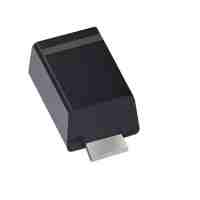Okay, as a special diode designed specifically for fast switching applications, switch diodes have significant characteristics that distinguish them from ordinary rectifier diodes. The core design goal is to achieve high-speed, efficient, and reliable transition between the "on" (conducting) and "off" (cutoff) states.

The following are the main characteristics of switch diodes:
Extremely fast switching speed:
Core advantage: This is the most core and prominent feature of switch diodes. It can switch from conducting state to cutoff state in a very short time (usually on the nanosecond or even picosecond scale), or vice versa.
Key parameters: This is mainly due to two key parameters:
Extremely small junction capacitance: In design, the parasitic capacitance of the PN junction is minimized by reducing the PN junction area and using special processes such as point contacts and Schottky barriers. The smaller the capacitance, the shorter the charging and discharging time, and the faster the state switching.
Extremely short reverse recovery time: When the diode suddenly switches from forward conduction to reverse bias, the stored minority carriers need to be 'swept' to completely cut off. Switching diodes significantly reduce the storage capacity and lifetime of minority carriers through special doping processes and structural designs (such as gold doping processes or the use of Schottky structures), thereby reducing the reverse recovery time to a very low level (much lower than ordinary rectifiers). Short 't_rr' is crucial for high-frequency switching, as it avoids losses and switching noise caused by trailing currents.
Lower forward pressure drop:
Purpose: In the conducting state, it is necessary to minimize conduction loss and power consumption as much as possible to improve efficiency.
Implementation: By optimizing materials and structure, switch diodes typically have lower forward conduction voltage drop than ordinary diodes of the same current level. Although it may not be as low as some Schottky diodes, it has significant advantages over ordinary rectifiers.
Smaller reverse leakage current:
Purpose: In the cut-off state, it is necessary to ensure good isolation, that is, to minimize the current leakage from the cathode to the anode (reverse leakage current).
Implementation: Although switch speed is a priority, the design will also try to control the reverse leakage current at a relatively low level (usually in the microampere range or lower) to ensure the effectiveness and stability of the turn off state. However, in Schottky diodes that pursue ultimate speed, the reverse leakage current is usually slightly larger than that of silicon switching transistors.
Good high-frequency characteristics:
Overall, the extremely small junction capacitance and short reverse recovery time jointly determine the excellent high-frequency performance of the switching diode. It can be effectively applied to high-frequency signal switching, high-speed pulse circuits, RF circuits, and other occasions, while ordinary diodes may not work properly or have low efficiency at these frequencies due to excessive capacitance or long recovery time.
A certain ability to withstand current surges:
Application requirements: In switch applications, especially under surge or pulse current conditions (such as relay coil freewheeling, switch power supply absorption), diodes need to be able to withstand instantaneous large current surges without damage.
Design considerations: The design of switch diodes usually takes into account a certain peak surge current tolerance while ensuring speed.
High reliability:
Key requirement: Due to the frequent operation of switch diodes in high-frequency and repetitive switching states, their structural design and manufacturing processes need to ensure long-term reliability under such dynamic stress.
Summary and Typical Applications:
The core value of switch diodes lies in their "fast" (switching speed) and "low" (relatively low conduction loss). They are widely used in:
High speed logic circuits, such as clamping and isolation in TTL and ECL logic gates.
High frequency signal switch/gating: Switching signal paths in communication and RF circuits.
Pulse shaping and detection: Processing high-speed pulse signals.
Protection circuit: As a freewheeling diode, it absorbs the back electromotive force generated when inductive loads (such as relays and motor coils) disconnect.
Switching power supply: in secondary rectification or clamping circuits (especially in high-frequency applications).
Sample and hold circuit: fast conduction/cutoff to capture instantaneous values of analog signals.
Key selection points:
When selecting a switch diode, special attention should be paid to its reverse recovery time, junction capacitance, maximum forward current, peak reverse voltage, forward voltage drop, and reverse leakage current parameters, and weighting should be carried out according to specific application scenarios such as operating frequency, voltage and current levels, and power consumption requirements. Schottky diodes have become the preferred choice for ultra high speed switch applications due to their lack of minority carrier storage effect (theoretically, t_rr ≈ 0) and lower forward voltage drop. However, their reverse leakage current is relatively large and their reverse breakdown voltage is relatively low.
